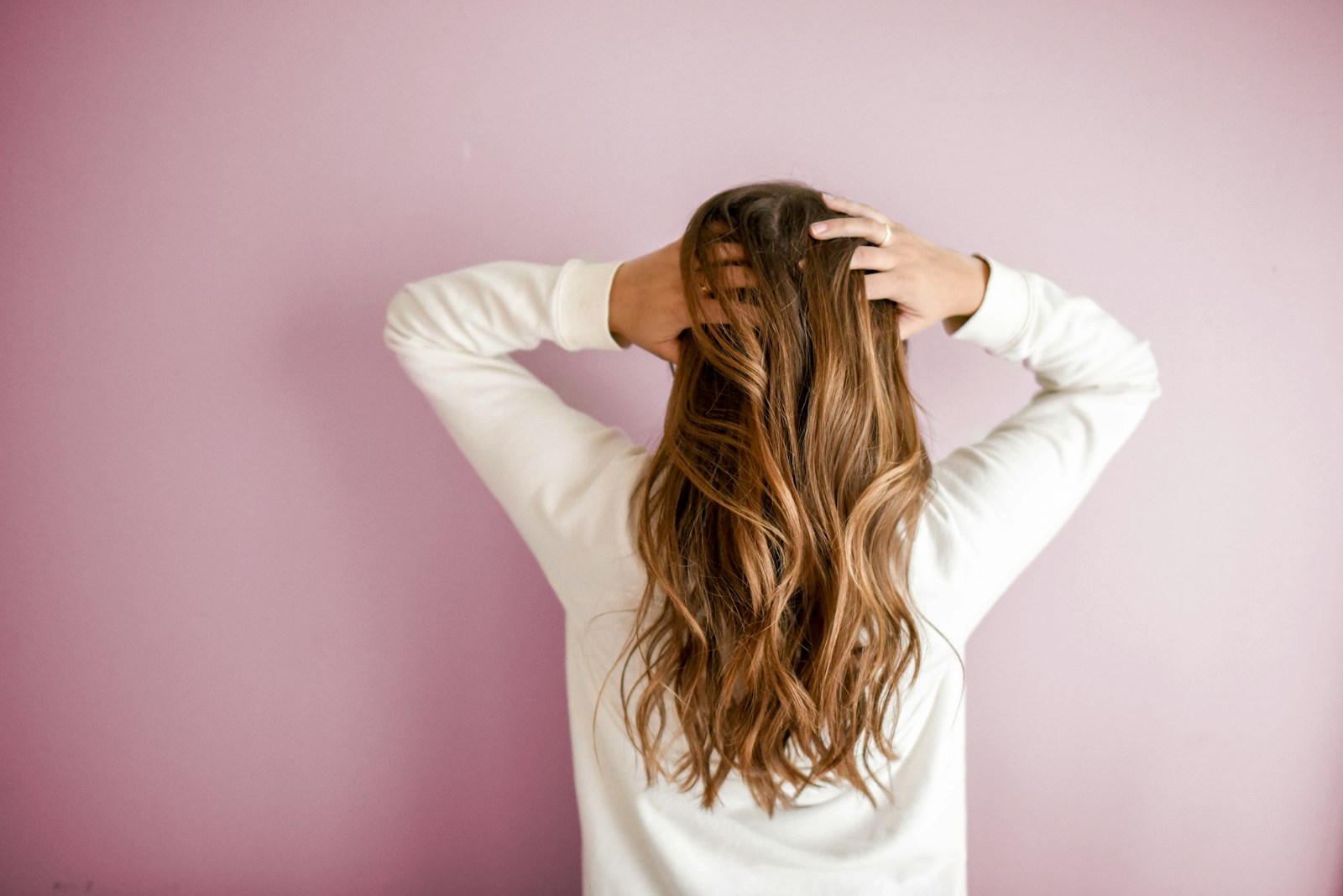
Unlocking the Secrets to Luscious Locks: 5 Tips to Accelerate Hair Growth
some posts on our site may contain affiliate links to trusted products
Are you longing for Rapunzel-like tresses but finding your hair growth journey to be a slow crawl? You’re not alone. Many of us dream of having healthy, voluminous hair, but achieving it can sometimes feel like an uphill battle. Fear not, for I’ve gathered five tried-and-tested tips that have personally helped me accelerate my hair growth, and as always, I look at what science and research says works!
Table of Contents

1. Nourish from Within: A Balanced Diet and the supplements that have made a difference for me
One of the most fundamental yet often overlooked aspects of promoting hair growth is maintaining a balanced diet. Just as your body needs proper nutrition to function optimally, your hair follicles require essential vitamins and minerals to thrive.
Incorporate foods rich in protein, such as eggs, fish, and lean meats, to provide the building blocks for hair growth. Additionally, prioritize fruits, vegetables, and whole grains to ensure a sufficient intake of vitamins A, C, and E, as well as minerals like zinc and iron, which play crucial roles in promoting healthy hair growth.
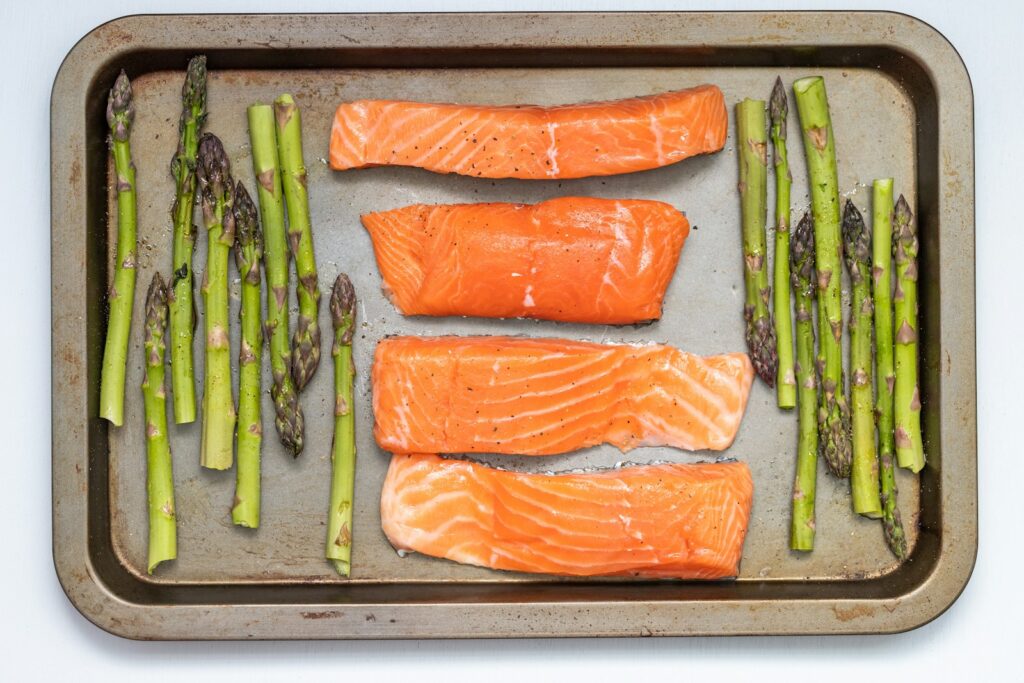
Top 10 Foods For Hair Health
- Salmon: Rich in omega-3 fatty acids, protein, and vitamin D, salmon supports scalp health and encourages hair growth.
- Eggs: Loaded with protein, biotin, and essential nutrients like zinc and selenium, eggs contribute to strong, shiny hair.
- Spinach: Packed with iron, vitamins A and C, and folate, spinach promotes scalp health and aids in the production of sebum, which moisturizes the hair.
- Sweet Potatoes: High in beta-carotene, sweet potatoes are converted into vitamin A by the body, promoting cell growth and healthy hair follicles.
- Avocado: Full of healthy fats, vitamins E and C, and biotin, avocados nourish the scalp and support the hair’s natural shine and elasticity.
- Nuts and Seeds: Almonds, walnuts, and sunflower seeds are rich in vitamins, minerals, and healthy fats, promoting hair growth and scalp health.
- Berries: Blueberries, strawberries, and blackberries are packed with antioxidants and vitamin C, protecting hair follicles from damage and promoting collagen production.
- Greek Yogurt: High in protein, Greek yogurt supports hair growth and strengthens hair strands, while probiotics contribute to a healthy scalp.
- Lean Poultry: Chicken and turkey provide high-quality protein, essential for healthy hair growth, along with iron and zinc, which support hair follicle health.
- Beans and Legumes: Lentils, chickpeas, and black beans are rich in protein, iron, zinc, and biotin, essential for strong, healthy hair growth.
Supplements Proven To Promote Hair Growth
Spermidine
Spermidine, a naturally occurring polyamine found in various foods such as wheat germ, soybeans, and aged cheese, has garnered attention for its role in promoting hair growth.
One mechanism by which spermidine influences hair growth is through its ability to induce autophagy, a cellular process involved in the removal of damaged or dysfunctional components within cells. By promoting autophagy, spermidine can facilitate the renewal and rejuvenation of hair follicle cells, supporting healthier hair growth.
Spermidine has also been shown to possess anti-inflammatory and antioxidant properties, which could help mitigate inflammation within the scalp and hair follicles. Chronic inflammation has been linked to hair loss and thinning, so reducing inflammation creates a more conducive environment for hair growth.
recommended brand of spermidine
NMN
Nicotinamide Mononucleotide (NMN) is a molecule that serves as a precursor to nicotinamide adenine dinucleotide (NAD+), a coenzyme involved in various cellular processes, including energy metabolism and DNA repair. As we age, NAD+ levels decline, which has been associated with aging-related cellular dysfunction.
Research suggests that NMN supplementation can increase NAD+ levels in cells, thereby potentially reversing some aspects of cellular aging and promoting overall health. NMN may contribute to healthier hair and support hair growth in several ways:
- Cellular Energy Production: NAD+ is essential for cellular energy production through processes like glycolysis and oxidative phosphorylation. By increasing NAD+ levels, NMN supplementation may enhance cellular energy metabolism within hair follicles, providing the energy needed for hair growth.
- DNA Repair: NAD+ is involved in DNA repair mechanisms, which are crucial for maintaining the integrity of hair follicle cells. By promoting DNA repair, NMN supplementation may help prevent damage to hair follicles caused by environmental factors, oxidative stress, or aging, thereby supporting healthy hair growth.
- Anti-inflammatory Effects: Chronic inflammation has been linked to hair loss and thinning. NMN’s potential anti-inflammatory properties may help mitigate inflammation within the scalp and hair follicles, creating a more conducive environment for hair growth.
- Stimulation of Hair Follicle Stem Cells: Hair growth relies on the activity of hair follicle stem cells, which regenerate and produce new hair follicles. Studies suggest that NAD+ levels play a role in regulating the activity of these stem cells. By increasing NAD+ levels through NMN supplementation, it’s possible that the proliferation and differentiation of hair follicle stem cells may be enhanced, promoting hair growth.
Collagen
Collagen is a protein that is found throughout the body and plays a crucial role in various bodily functions, including the health of the skin, hair, and nails. While there is some anecdotal evidence suggesting that collagen supplements may promote hair growth, the scientific research on this topic is limited and not entirely conclusive. However, some studies suggest potential benefits:
- Collagen and Hair Follicles: Hair follicles are composed primarily of collagen, and collagen synthesis is essential for the structural integrity of the hair follicle. Research indicates that collagen production decreases as we age, which may contribute to hair thinning and loss. Some studies suggest that supplementing with collagen may help support the health of hair follicles by providing the necessary building blocks for collagen production.
- Improved Nutrient Delivery: Collagen contains amino acids such as proline, glycine, and arginine, which are important for hair growth and overall health. These amino acids are involved in the production of keratin, the protein that makes up hair strands. By consuming collagen, you may ensure that your body has an adequate supply of these amino acids for supporting hair growth.
- Antioxidant Properties: Collagen also possesses antioxidant properties, which may help protect hair follicles from damage caused by free radicals. Oxidative stress can contribute to hair loss and premature aging of the hair, so consuming antioxidants like collagen may help maintain the health of the scalp and hair follicles.
- Skin Health: While not directly related to hair growth, collagen is known for its benefits to skin health. Healthy scalp skin is crucial for supporting hair growth, and collagen supplementation may indirectly promote hair growth by improving the health of the scalp.
Recommended Collagen supplement
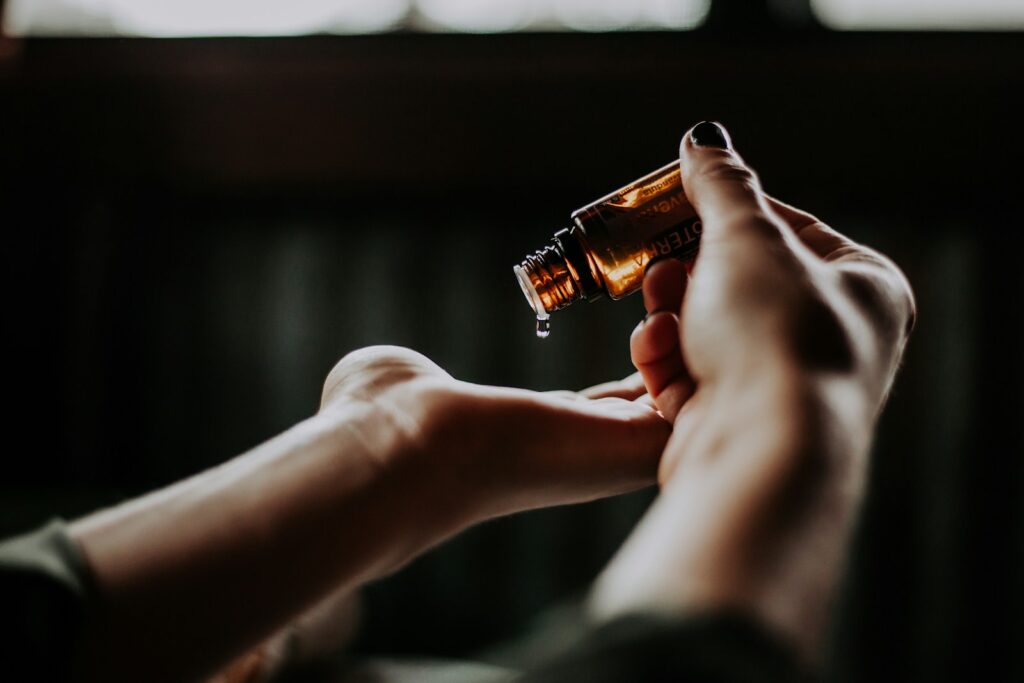
2. Scalp Care: Stimulate and Nourish
A healthy scalp is the foundation for lush hair growth. Regularly massage your scalp to stimulate blood circulation, promoting nutrient delivery to the hair follicles. Utilize natural oils like rosemary, jojoba, and argan oil to nourish the scalp and moisturize the hair shaft. These oils not only hydrate the scalp but also possess properties that can strengthen hair strands, reducing breakage and fostering growth.
Incorporating a scalp massage and oil treatment into your weekly routine can make a noticeable difference in the health and growth of your hair.
How to do a Scalp Massage
Scalp massage is a simple yet effective technique that can promote hair growth by stimulating blood circulation, reducing stress, and encouraging relaxation.
Here’s a step-by-step guide on how to perform a scalp massage for hair growth:
- Prepare: Find a comfortable and quiet place where you can relax without distractions. You can perform a scalp massage on dry hair or slightly damp hair, whichever you prefer.
- Choose Your Oil (Optional): While not necessary, you may choose to use a natural oil such as coconut oil, rosemary, almond oil, or jojoba oil to enhance the massage experience. These oils can nourish the scalp and hair while providing a smooth surface for your fingers to glide over.
- Warm Up the Oil (If Using): If you’re using oil, warm it up slightly by rubbing it between your palms or placing the container in warm water for a few minutes. This will make the oil easier to apply and more comfortable on your scalp.
- Section Your Hair: If you have long or thick hair, you may find it helpful to section your hair using clips or hair ties. This will allow you to focus on one area of the scalp at a time.
- Apply Oil (If Using): Take a small amount of oil in your hands and apply it evenly to your scalp. Start at the front hairline and work your way back, using your fingertips to massage the oil into the scalp with gentle, circular motions. You can also use a silicone scalp massager like the Heeta Scalp Massager.
- Begin the Massage: With clean hands, start massaging your scalp using your fingertips. Apply gentle pressure and use small, circular motions to massage the entire scalp. Start at the front of your scalp and work your way back to the nape of your neck, then move to the sides and the crown of your head.
- Focus on Pressure Points: Pay special attention to pressure points on the scalp, such as the temples, the base of the skull, and behind the ears. Massaging these areas can help relieve tension and promote relaxation.
- Massage for 5-10 Minutes: Aim to massage your scalp for at least 5-10 minutes to experience the full benefits. You can adjust the duration based on your preferences and schedule.
- Relax and Enjoy: As you massage your scalp, focus on relaxing and enjoying the sensation. Take deep breaths and let go of any tension or stress you may be holding in your body.
- Finish: Once you’ve completed the massage, gently comb or brush through your hair to distribute any excess oil evenly. If you prefer, you can leave the oil in your hair for a few hours or overnight before washing it out.
Performing a scalp massage regularly, ideally a few times per week, helps improve blood circulation, nourish the hair follicles, and promote hair growth over time.
Click here for recommended scalp oil that I use
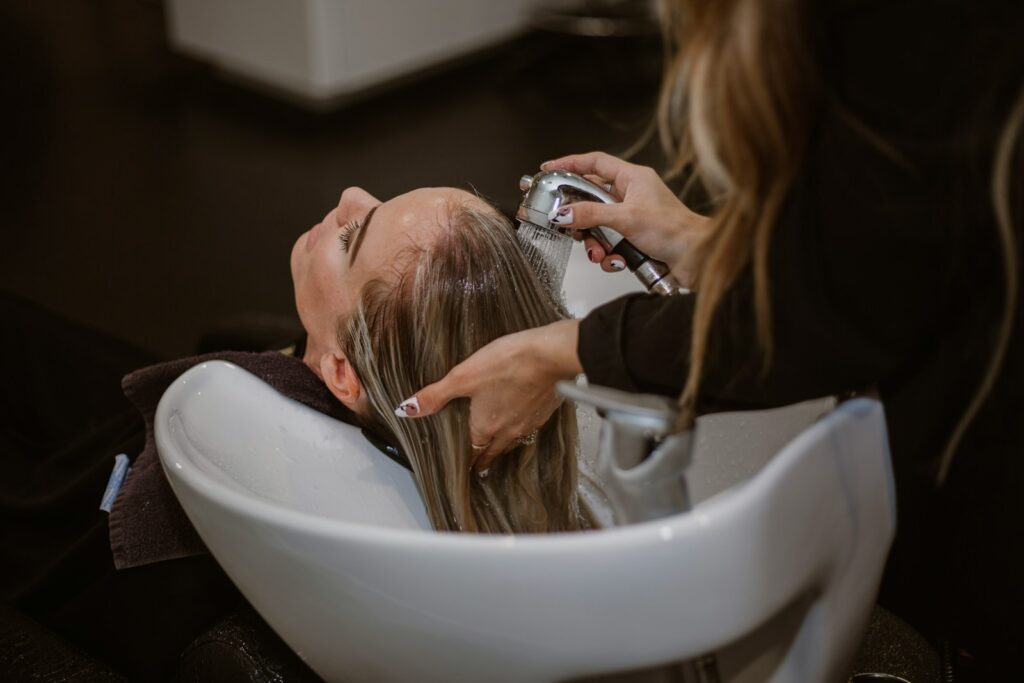
3. Protective Styling: Preserve and Strengthen
While styling your hair can be fun and expressive, excessive heat and manipulation` can lead to damage and hinder growth. Embrace protective hairstyles that minimize stress on the hair, such as braids, twists, or buns.
Heatless styling methods offer a gentle alternative to heat styling tools, helping to prevent damage and promote healthier hair.
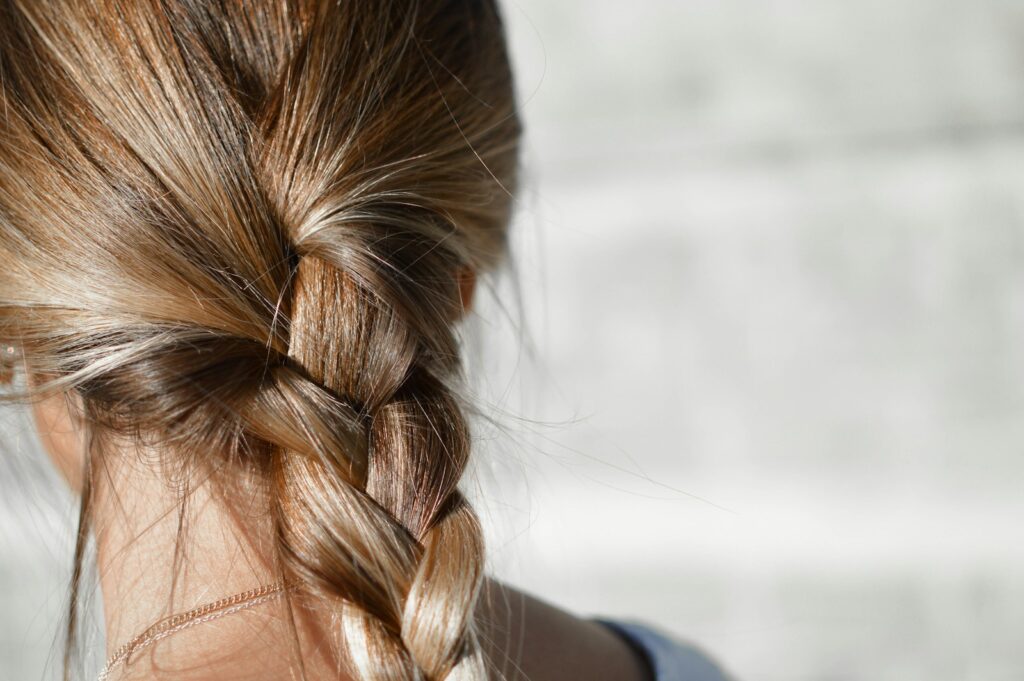
Heatless styling methods for achieving various hairstyles
- Braiding: Braiding is a versatile heatless styling technique that can create a variety of looks, from loose waves to tight curls. You can try different types of braids, such as French braids, Dutch braids, or fishtail braids, depending on the style you want to achieve. Simply braid your hair when it’s damp or slightly dry, leave it in for several hours or overnight, and then unravel the braids to reveal beautifully textured waves or curls.
- Twisting: Similar to braiding, twisting involves twisting sections of hair together to create waves or curls. You can twist your hair while it’s damp or apply a styling product for added hold. Leave the twists in for several hours or overnight, then unravel them to reveal soft, natural-looking waves.
- Rollers: Foam or fabric rollers are excellent heatless tools for creating curls or waves. Simply roll sections of damp hair onto the rollers, secure them in place, and leave them in until your hair is dry. You can also sleep with rollers in overnight for more defined curls. Experiment with different roller sizes to achieve your desired curl type.
- Pin Curls: Pin curls are a classic heatless styling method that involves wrapping sections of hair around your fingers and securing them with bobby pins or clips. This technique creates tight, defined curls that can last for hours or even days. After pinning your curls in place, allow them to dry completely before removing the pins.
- Sock Bun: A sock bun is a simple and effective way to achieve heatless curls or waves. Cut the toe off of a clean sock and roll it up to create a doughnut shape. Dampen your hair slightly, then gather it into a high ponytail and secure it with an elastic. Slide the sock doughnut over the ponytail and roll your hair down over the sock to create a bun. Leave the bun in overnight, then unravel it in the morning to reveal voluminous curls.
- Headband Curls: Headband curls are easy to create and require only a soft headband. Dampen your hair slightly, then place a stretchy headband around your hair is tucked into the headband. Leave the headband in overnight, then remove it in the morning to reveal soft, bouncy curls.
These styles not only shield your strands from environmental stressors but also reduce the need for daily styling, allowing your hair to rest and grow uninterrupted. Always remember to use gentle hair accessories and avoid tight styles that can pull on the hair and cause breakage.
4. Prevent Split Ends: Prune for Progress
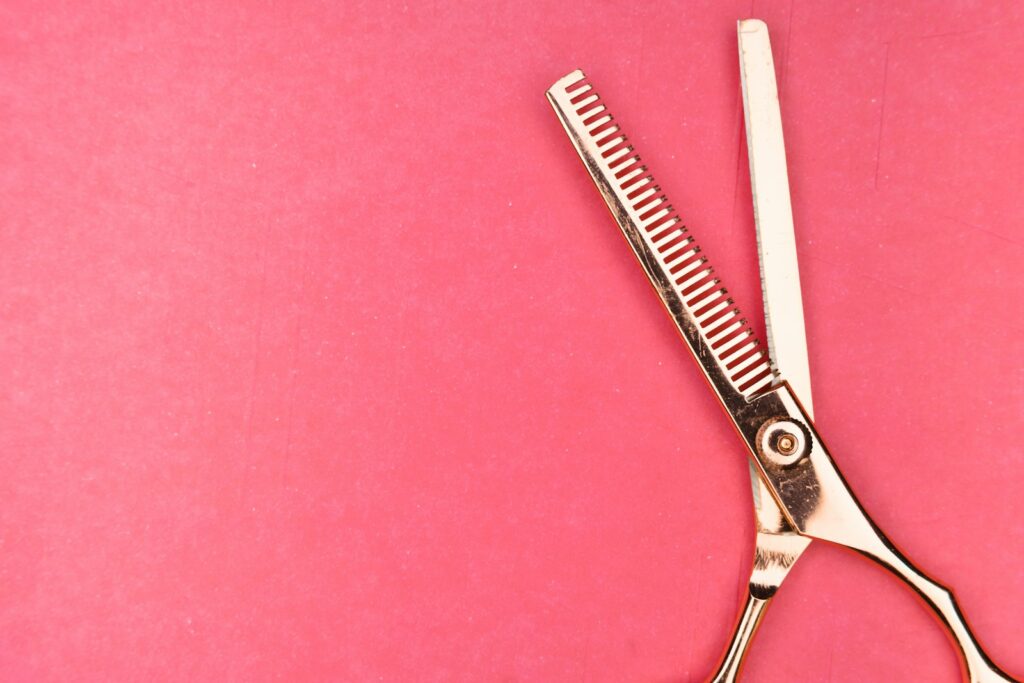
Trimming and preventing split ends are crucial aspects for maintaining healthy hair, and they indirectly support the overall process of hair growth. Here’s why:
- Prevents Further Damage: Split ends occur when the protective outer layer of the hair cuticle becomes damaged and begins to fray, resulting in the hair splitting into two or more strands. If left untreated, split ends can continue to travel up the hair shaft, causing further damage and weakening the hair structure. Trimming the hair regularly removes split ends, preventing them from progressing and minimizing the risk of breakage.
- Reduces Breakage: Split ends and damaged hair are more prone to breakage, leading to shorter hair lengths and a thinner appearance. By removing split ends through regular trims, you reduce the risk of breakage and help your hair retain its length and thickness. This allows your hair to grow longer and stronger over time without constantly breaking off.
- Promotes Healthy Hair Growth: Healthy hair grows from the scalp, and maintaining the integrity of the hair shaft is essential for optimal growth. Trimming the hair regularly helps maintain the overall health of the hair by removing dry, damaged, or brittle ends. This promotes stronger, more resilient hair that is less prone to breakage and can continue growing without hindrance.
- Maintains Hair Shape and Style: Regular trims help maintain the shape and style of your hair, preventing it from looking unkempt or uneven. By removing split ends and damaged sections, your hair can maintain a more uniform appearance, allowing you to enjoy your desired hairstyle while promoting healthy growth.
- Prevents Tangling and Knots: Split ends and damaged hair are more likely to tangle and form knots, which can lead to further breakage when trying to detangle the hair. Trimming regularly helps prevent excessive tangling and knot formation, making it easier to manage and care for your hair.
Trimming the hair regularly and preventing split ends are essential practices for maintaining healthy hair growth. By removing damaged ends, you minimize the risk of breakage, promote stronger hair, and create a conducive environment for optimal growth.
Incorporating regular trims into your hair care routine, along with other healthy habits such as minimizing heat styling and protecting your hair from environmental damage, can help you achieve and maintain the long, healthy hair you desire.
5. Patience and Consistency: The Ultimate Key
Perhaps the most crucial tip of all is to practice patience and consistency. Hair growth is a gradual process that requires dedication and perseverance. Implementing a holistic approach to hair care, including a balanced diet, scalp treatments, protective styling, and regular trims, all sets the foundation for long-term growth.
Everyone’s hair journey is unique, so embrace your natural texture and focus on nurturing your hair from the inside out. With time and commitment, you’ll unlock the secrets to achieving the hair of your dreams.
In Summary: Hair Growth Methods:
- Scalp Massages: Stimulate blood flow to the scalp, promoting hair growth.
- Natural Oils: Coconut oil, castor oil, and argan oil nourish the scalp and hair shaft, fostering growth.
- Protective Styling: Braids, twists, and buns minimize stress on the hair, allowing it to grow freely.
- Regular Trims to remove split ends: Remove split ends and prevent breakage, promoting overall hair health and growth.
- Balanced Diet: Provide essential nutrients for hair growth by consuming foods rich in protein, vitamins, and minerals.
In conclusion, achieving the hair of your dreams requires a multifaceted approach that addresses both internal and external factors. By nourishing your body, caring for your scalp, protecting your strands, and maintaining consistency, you can unlock the secrets to luscious, healthy hair growth. Embrace the journey, be patient, and celebrate the progress along the way. Your mane will thank you for it!
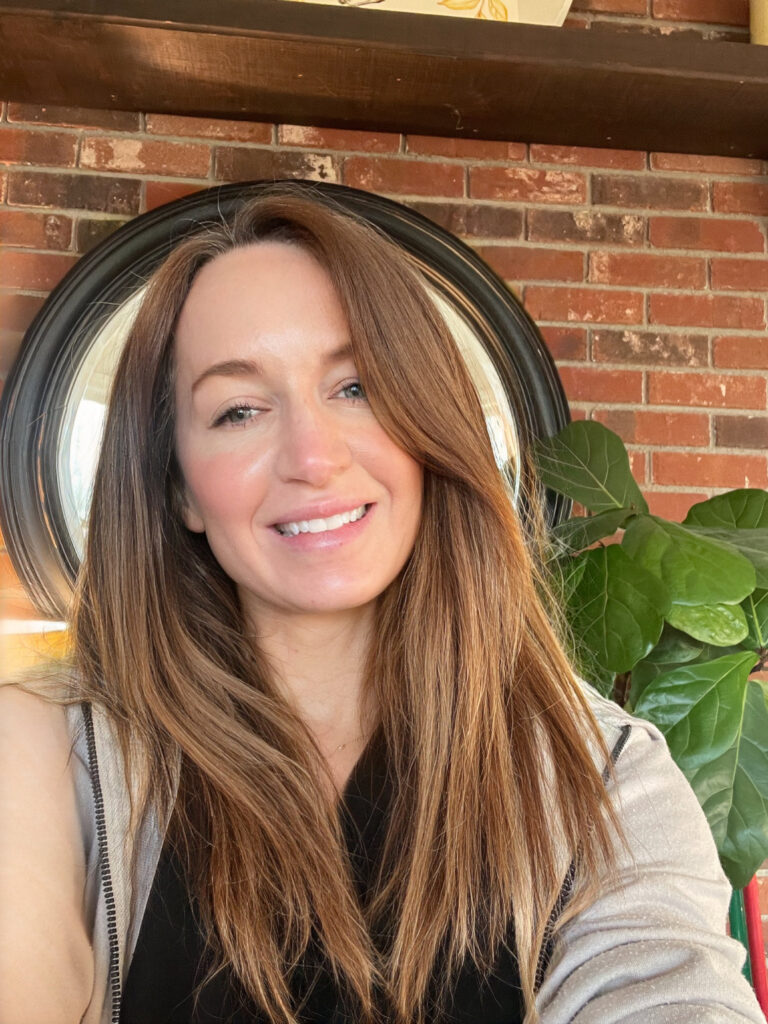
My favorite Hair Guru!
You May Also Enjoy:
5 Hair Growth Products: Reviews and Ratings for Stonger, Healthier Hair



